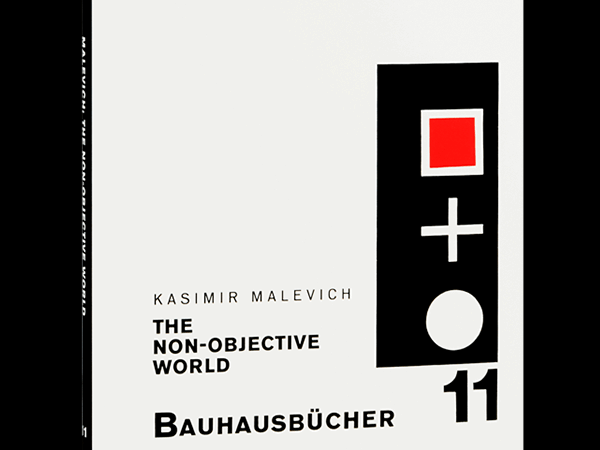WHEN IT COMES to truly iconic touchstones of fantasy and sci-fi, Dungeons and Dragons is in a plane of its own. After four-plus decades of existence, the cultural significance of its universe is rivaled by only a small handful of other heavy hitters like Lord of the Rings and Star Wars. Its early design and aesthetics borrowed liberally from Robert E. Howard’s Conan series, pulp novels and comics, and of course Tolkien, but its DNA – its “source code” – were the rigorous rulesets of the strategic wargaming community, which preceded it by decades.
Dungeons and Dragons Art and Arcana, published by Ten Speed Press, is a magnum opus of paintings, illustrations, sketches, and photographs from the first four decades of D&D. While the art and ephemera collected within is certainly appealing in its own right, the book is also a trove of historical and anecdotal information. While D&D is approaching a half-century of existence, there are even longer arcs at play, from fantasy and sci-fi literature to pen-and-paper gaming, and the book does an admirable job of placing its wild spread of images (many of them iconic to fans of the genre) in these broader contexts.

The book’s early focus is on Gary Gygax, now known as the creator of D&D, and as such, essentially the Steve Jobs of RPGs. Gygax, an insurance underwriter from the small town of Lake Geneva, Wisconsin, was an avid wargamer, which in the 1960s meant playing reenactments of actual battles, using miniatures alongside rulebooks published by companies such as Avalon Hill. His particular focus was medieval wargaming, which was far less represented in rulebooks and scenarios than the battles of the modern era.
This dearth of guides and rules led him to write a rulebook of his own, called Chainmail: Rules for Medieval Miniatures. While the book took the rigorous rules and attention to historical accuracy generally embraced by the wargaming community as its starting point, its final section cast accuracy to the wind, and “challenged gamers’ expectations by describing how wargames could involve goblins, trolls, giants, dragons, heroes, and wizards drawn from sword-and-sorcery literature.” This brief addendum (called the “Fantasy Supplement”) was the seed from which the mighty role-playing genre would grow.

With the favorable reception Chainmail received, Gygax and his early collaborator, Dave Arneson, set out to create a dedicated rulebook for fantasy wargaming, which would be the first to bear the name Dungeons and Dragons. The book was assembled on a shoestring budget, with illustrations gathered from any like-minded friends or family with artistic talents. Gygax and his friend Don Kaye founded their own publishing company, Tactical Strategy Rules (generally known by its much more open-ended and mystical-sounding initials, TSR) to publish the book.
The illustrations Dungeons and Dragons and Chainmail, like those in most gaming rulebooks and publications of the era, could generously be described as “homebrew”, which essentially means they were redrawn versions of illustrations from other sources – in this case, pulp novels and comics. However, as the authors of Art and Arcana point out, this was a time before the heroes and monsters of fantasy had been standardized, and while there was certainly a centuries-long tradition of fantastical art that included mythical creatures, there were not yet any easy visual analogs for elves, orcs, and wizards (let alone liches, hypogriffs, and more exotic fauna). This meant, at least for untrained artists, their heroes and creatures had to be pieced together from various other visual touchstones.

Eventually, with steadily growing sales (and thus budgets), TSR could afford to pay for art, first via freelancers, and eventually by hiring an inhouse art team. The bulk of Art and Arcana traces the evolution of D&D’s artwork from the earliest days (starting with the black-and-white “Original Edition”) all the way up to the present day. One of the book’s most charming and appealing features, called “Evilution”, consists of a two-page spread showing every iteration of a given creature from D&D lore, featuring iconic baddies like the Beholder and the Mind Flayer.
The book also does an admirable job of showing the tension between D&D’s uncensored, grittier, “heavy-metal” origins and its subsequent attempts to undermine those origins with a more family-friendly aesthetic. As D&D grew in popularity, alarm over its perceived satanic and occult tendencies grew as well, with sensationalist news reports and the parental groups (like the barely-believable B.A.D.D., “Bothered about Dungeons and Dragons”) fanning the flames. This led to a gradual toning-down of the game’s more overtly dark aspects, reflected in artwork that played up heroic tropes (vanquishing dragons, emerging from the depths) while removing the more overtly demonic and brutal ones (human sacrifice, demonic altars).

The clearest manifestation of this desire to steer the game in a more kid- and family-friendly direction was Morley, a cartoonish wizard who became the face of TSR. He appeared in ads as a friendly gatekeeper to an unthreatening fantasy world, replacing the grotesque demons and rearing dragons of earlier marketing materials. While it was already well-known that not all fans of the game appreciated the softer direction TSR often felt they had to take, Art and Arcana reveals tensions among staff as well, with old-school artists used to complete freedom deriding the new direction from management. (One piece of ephemera features unflattering sketches of the cartoon wizard, with the unambiguous caption “Morley Sucks”.)

The first decade of D&D saw TSR grow immensely, but with such unlimited growth came inevitable growing pains, and by the early 80s TSR’s spending began to outpace their earnings, eventually leading to Gygax’s ouster. As the company tried to shore up its losses, they turned to an increasing number of different revenue streams, from the successful (creating the beloved Dragonlance series) to the baffling (acquiring Greenfield Needlewomen, a craft set manufacturer focused on stitching). Licenses were sold left and right, resulting in a glut of cheap products that kept the money coming in but made no significant advancements to the D&D aesthetic.
Eventually, as the renewal of the company continued into the late 80s, TSR management decided it was time to revamp the fundamentals of the game itself, and began planning the Second Edition. It would be a chance to revamp (and, crucially for the bottom line, resell) all official rulebooks, supplements, gameboards, and other ephemera, but it would have to be handled carefully to avoid alienating the core community. TSR approached the community about their proposed changes, receiving over 15,000 surveys by mail, and set about to launch the Second Edition.

Upon its launch, players reacted negatively to artwork that further toned down occult and sexually suggestive themes, as well as changes to the rules that discouraged players from using overtly evil characters. TSR’s fortunes faltered throughout the 90s, eventually selling to Wizards of the Coast, creators of Magic: The Gathering. Nonetheless, the revamped Second Edition set the precedent for the decades that would follow, with the new owners successfully regrowing the Dungeons and Dragons brand and eventually launching a Third Edition (2000), Fourth Edition (2008), and Fifth Edition (2012).
While Art and Arcana is not afraid to approach its subjects – be they art, artists, players, or the general public – with a critical eye, its overall sentiment falls well on the side of loving tribute. The body of work produced under the auspices of D&D over its first four decades stands among the most creative of any fantasy universe, in large part because it is not simply one universe, but a multiverse bound together by a system of interlocking rules.

Gygax’s system was so effective because it grounded the limitless worlds of fantasy in the decades-old rules and systems of traditional wargaming, codifying the tension between unbridled creativity and systemic constraints that gives the RPG genre its immense appeal. Similarly, while the artwork presented in Art & Arcana is a wild array that covers every possible style and fantasy trope, its best pieces are those that temper unbridled creativity with the fundamental myths and stories at the heart of fantastic literature.
Dungeons and Dragons Art and Arcana: A Visual History
Ten Speed Press
440pp, hardcover, $50.00




